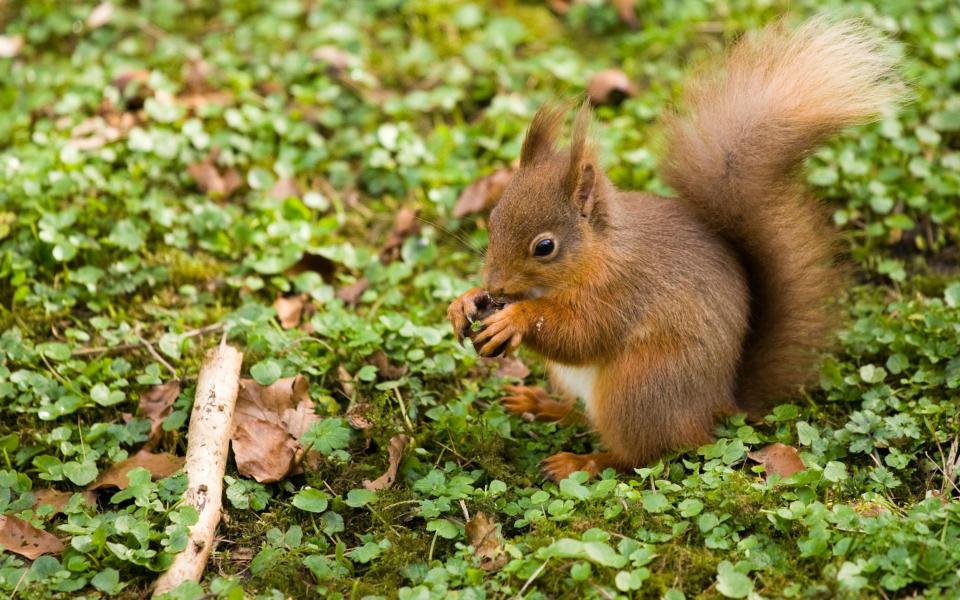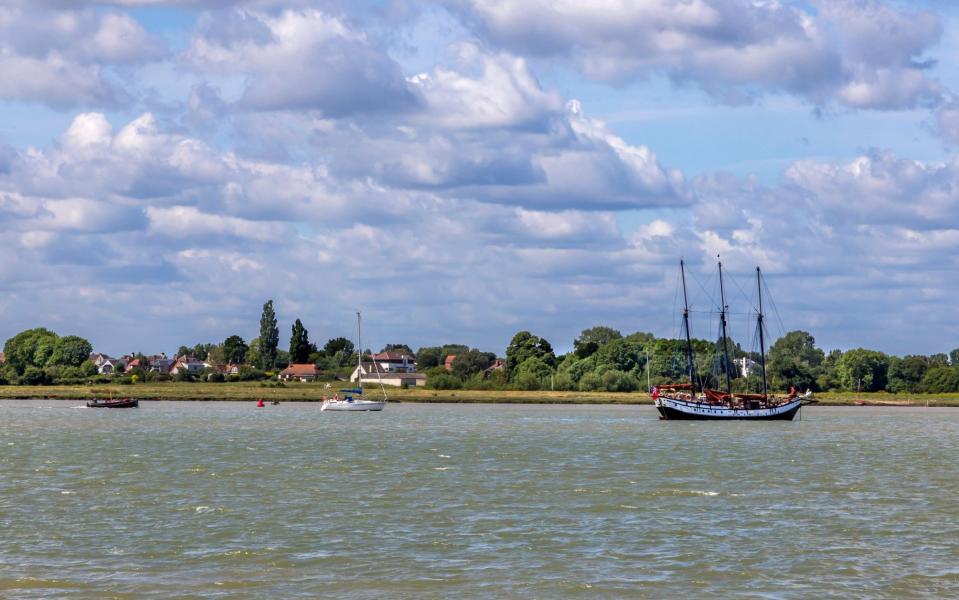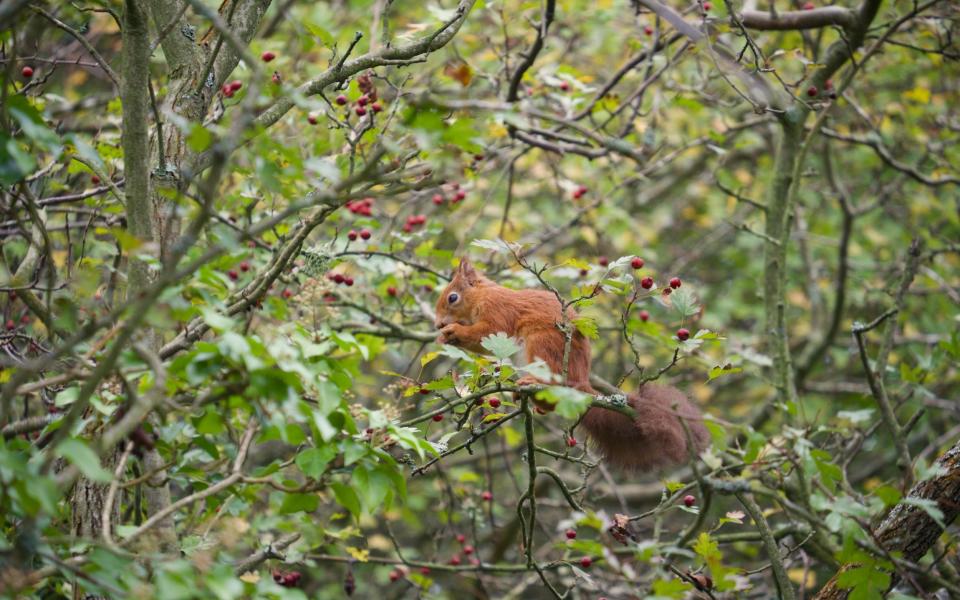When Beatrix Potter published her second book, The story of squirrel NutkinIn 1903, she could not have foreseen the future that awaited her beloved red squirrels.
But less than thirty years earlier, North American gray squirrels had been introduced as a novelty into the grounds of certain English stately homes. The bushy-tailed reds that inspired Potter’s stories quickly went into retreat.
They have since been virtually lost from England and Wales. Things are less dire in Scotland and Ireland; Even in these strongholds, invasive grays are on the rise. Our populations of native reds are holding on with their claws.
The crash in their fortunes is due to two factors. According to The Wildlife Trusts, greater grays compete with reds for resources and also carry squirrel pox: a deadly virus to which reds have no immunity. As a result, when encountering grays, red squirrel populations are driven out and quickly collapse.
In southern England they survive only on the Isle of Wight and Brownsea Island in Poole Harbour, while in Wales they are almost all restricted to Anglesey. Scotland has the vast majority (Loch Lomond and the Trossachs are particularly good for sightings); but as gray squirrels increasingly encroach on the red animals’ remaining territory, the fate of our native animals seems unpromising.
But the eventual loss of red squirrels from Britain is not certain. In the regions where they still live, a few dedicated conservationists are waging war against the grays. One of these is Jackie Foott of British Red Squirrel, who coordinates gray squirrel management in Beatrix Potter’s home country of Cumbria.
“Red squirrels always put a smile on people’s faces,” she says, “but the only reason we still have them in northern England is thanks to decades of removing grays from the environment. The two species absolutely cannot coexist.”
It’s a similar story in Northumberland, where Paul Hewitt manages the National Trust’s Wallington Estate. “We are very much on the front line in the battle to save the red squirrels,” he reveals. “About 20 years ago we only had reds around here, but they quickly declined when the grays arrived in 2006. We are doing our best to control the spread of the grays while research into long-term solutions continues, but right now, eradication is the most important thing. the only tool we have.”
It’s a never-ending task. In Anglesey, the red squirrel’s years of protection have recently been jeopardized by grays crossing the Menai Bridge and re-establishing themselves on the island. And elsewhere time is running out.
From several million in Victorian times, only 120,000 red wines would survive; and while there are glimmers of good news from the likes of the Yorkshire Dales, where the reds are increasing, no population is safe as the grays continue to expand their range.
The revival of hawks and pine martens across Britain certainly helps, as grays fall prey more easily to these native squirrel predators.
But in reality, red wines will not survive without human intervention. “Eradication is controversial,” admits Paul Hewitt.
“We don’t like to do it. But if we want to save Britain’s native red squirrels, there is no other choice.”
Five places to see red squirrels in Britain
1. Northern delights
The Lake District still has a healthy population of red squirrels. Ullswater, an hour’s drive from where Beatrix Potter wrote her stories, is particularly reliable.

Spot the real Squirrel Nutkins from the windows of Hawkhow Cottage, one of two rental properties on a lakeside estate (from £400 per night, for eight people; coolstays.com).
Little Nut, a former quarry cottage near Lake Windermere, also has squirrels in the garden (weekend stay from £1,444, for four people; littlenutcottage.co.uk). Or head to Kielder Forest in Northumberland, home to half of England’s red wines. Kielder Waterside offers weeklong stays from £549 (sleeps four, hoseasons.co.uk).
2. The Essex Outpost
Inspired by the island bastions of Anglesey, Brownsea and elsewhere, residents of Mersea Island in Essex took it upon themselves in 2012 to reintroduce red squirrels to their east coast outpost.
From a seed population of 27 individuals, it is now estimated that there are a maximum of 100.
Spot them (Firs Chase Garden is the best choice) during your stay at The White Hart Inn, a modern pub with rooms (B&B doubles from £175 per night, whitehartinnmersea.co.uk). Mersea is connected to the mainland by a causeway and only becomes a true island when it is closed off by the highest tides.


3. On the Wight circuit
In 2003, several disused Isle of Wight railway lines were converted into recreational routes. Among them is the Red Squirrel Trail, which runs 52 miles from East Cowes (near the ferry terminal) to Sandown and Shanklin. Along the way you cycle through farmland, coastal landscapes and forests where red squirrels live (Alverstone Mead Nature Reserve is a hotspot).
Wander a mile off the Trail to find Luccombe Hall Hotel (doubles from £118 per night, luccombehall.co.uk). Take your bicycle on the ferry for free; foot passenger fares from £20 return (wightlink.co.uk).
4. Highland Affair
Scotland and its Highlands are the British stronghold of red squirrels. There are plenty of them on the Monzie Estate, near Crieff in Perthshire, where they can be seen from all the guest houses. The newly renovated Gardener’s Cottage, surrounded by woodland, is the best choice (from £175 per night; two-night minimum stay, monzieestate.com).
Or try The Dell, on the edge of Abernethy Forest in the wildlife-rich Cairngorms National Park (cabins from £160 per night, thedellofabernethy.co.uk).
Passionate photographer? Head to the Cairngorms on a week-long winter photography tour that focuses on squirrels (plus deer and mountain hares) (from £2,295 pp, wildlifeworldwide.com).


5. Road to the islands
Protected by the sea, red squirrels still thrive on the Isle of Arran. Sightings are best in woodlands such as Glenashdale Forest, but are just as likely in the gardens of hotels and B&Bs. Stay in multiple accommodations on a seven-night self-guided walking holiday (from £855 pp, macsadventure.com). Or get similarly active in Aberdeenshire, where the red squirrel population is slowly increasing.
A week-long guided route takes in the Pyramid Trail from Balmoral Estate and Crathes Castle, Gardens & Estate, where squirrels roam (from £1,389 pp; departures in July, September and October, rambleworldwide.co.uk).
Where can you spot red squirrels elsewhere in Europe?
We may love red squirrels in Britain, but on the Continent they are an everyday sight. From the center of Copenhagen to the hills around Rome, you can encounter one of the rogue ears during almost every city trip.
Berlin is particularly good thanks to its wealth of city parks (stay at So Berlin das Stue, in the heart of the green Tiergarten).
Ireland’s Adare Manor offers a more typical squirrel habitat on its 840-acre estate in County Limerick. Or go even wilder and photograph squirrels and other Nordic forest inhabitants from one of Wild Sweden’s observation hides.